- Why Grow Pumpkins in the Vegetable Garden?
- 1. Versatility
- 2. Nutritional Value
- 3. Cost-effective
- 4. Educational Value
- 5. Decorative Element
- Benefits of Growing Pumpkins
- How to Choose the Right Variety?
- Growing Space
- Growing Season
- Climate
- Intended Use
- Taste and Texture
- Resistance to Diseases
- Availability
- The Best Pumpkin Varieties for Home Gardens
- Jack O’Lantern
- Main Characteristics
- Cultivation Tips
- Uses
- Storage
- Fun Fact
- Sugar Pie
- Characteristics
- Growing Sugar Pie Pumpkins
- Uses
- Conclusion
- Cinderella
- Atlantic Giant
- Growing Conditions
- Care and Maintenance
- Harvesting and Storage
- Uses
- Potential Problems
- Baby Boo
- “Question-Answer”
- What are the best varieties of pumpkins to grow in a vegetable garden?
- Are there any specific pumpkin varieties that are better for baking?
- Can you recommend any disease-resistant pumpkin varieties?
- What is the best time to plant pumpkin seeds?
- How much space do pumpkin plants need in the vegetable garden?
- How long does it take for pumpkins to reach maturity?
- “Video” Pumpkin Patch 2021 Progress | Late June, Early July
Adding pumpkins to your vegetable garden can bring a vibrant burst of color and flavor to your fall harvest. With so many different pumpkin varieties to choose from, it can be overwhelming to decide which ones to grow. In this article, we will explore some of the best pumpkin varieties to consider for your garden.
1. Jack O’Lantern: Known for its classic round shape and deep orange color, the Jack O’Lantern pumpkin is a favorite choice for carving during Halloween. This variety is also great for making delicious pumpkin pies and other autumn-inspired recipes.
2. Sugar Pie: If you’re looking for a smaller pumpkin that’s perfect for baking, the Sugar Pie variety is an excellent choice. These pumpkins have a rich, sweet flesh that is perfect for making pies, breads, and other desserts. They also have a long shelf life, making them a great option for storing and enjoying throughout the winter.
“Growing pumpkins in your vegetable garden can be a rewarding experience. Not only do they add beauty to your garden, but also provide a bounty of tasty treats for the fall season.”
3. Cinderella: The Cinderella pumpkin is known for its unique flattened shape and vibrant orange color. This variety is not only visually striking but also has a fine, sweet flesh that works well in both savory and sweet recipes. Consider growing Cinderella pumpkins if you want to add a touch of elegance to your autumn decor.
4. Atlantic Giant: For those looking to grow massive pumpkins for competitions or simply for fun, the Atlantic Giant variety is the way to go. These pumpkins can reach sizes of over 1000 pounds! While they may not be as flavorful as other varieties, they are sure to impress with their sheer size and presence in your garden.
No matter which pumpkin varieties you choose, make sure to provide them with plenty of sun, water, and space to grow. With proper care, you can enjoy a bountiful harvest of pumpkins that will bring joy and flavor to your fall festivities.
Why Grow Pumpkins in the Vegetable Garden?
Pumpkins are a popular vegetable to grow in the garden for several reasons. Whether you want to carve jack-o-lanterns for Halloween, make delicious pumpkin pies, or enjoy the health benefits of this nutritious vegetable, growing pumpkins in your vegetable garden can be a rewarding experience.
1. Versatility
Pumpkins are an incredibly versatile vegetable. They can be used in a wide range of dishes, both sweet and savory. From soups and stews to pies and breads, pumpkins add a unique flavor and texture to many recipes. Additionally, pumpkin seeds can be roasted and eaten as a nutritious snack.
2. Nutritional Value
Pumpkins are packed with essential nutrients, making them a healthy addition to any diet. They are a good source of vitamins A, C, and E, as well as potassium and fiber. Eating pumpkins can help boost your immune system, improve vision, and support digestive health.
3. Cost-effective
Growing your own pumpkins can be a cost-effective way to enjoy this seasonal vegetable. Pumpkin seeds are relatively inexpensive, and with proper care and maintenance, one plant can produce multiple pumpkins. This can save you money compared to buying pumpkins from a grocery store.
4. Educational Value
Growing pumpkins in your vegetable garden can be a valuable educational experience, especially for children. It teaches them about the life cycle of plants, the importance of proper care and maintenance, and the satisfaction of growing their own food.
5. Decorative Element
Pumpkins also have decorative value. They can be used to create festive displays during the fall season, adding color and charm to your vegetable garden or front porch.
In conclusion, growing pumpkins in your vegetable garden offers versatility in cooking, nutritional benefits, cost-effectiveness, educational value, and decorative appeal. By planting and caring for pumpkins, you can enjoy the many benefits that come with growing these versatile and nutritious vegetables.
Benefits of Growing Pumpkins
There are several benefits to growing pumpkins in your vegetable garden:
- Nutritional Value: Pumpkins are a rich source of essential vitamins and minerals, such as vitamin A, vitamin C, potassium, and fiber. Incorporating pumpkins into your diet can help boost your immune system, promote healthy vision, and support overall well-being.
- Versatility: Pumpkins can be used in a variety of dishes, from soups and stews to pies and bread. By growing pumpkins in your garden, you have a versatile ingredient readily available for various culinary creations.
- Decorative Purposes: The vibrant orange color of pumpkins makes them a popular choice for seasonal decorations, especially during Halloween and Thanksgiving. Growing your own pumpkins allows you to decorate your home and garden with fresh, homegrown produce.
- Educational Opportunities: Growing pumpkins can be a great way to educate children about gardening and the natural world. They can learn about the life cycle of plants, the importance of sun, soil, and water, and the joy of harvesting their own food.
- Cost Savings: Purchasing pumpkins from the store can be expensive, especially during the holiday season. By growing your own pumpkins, you can save money and enjoy the satisfaction of harvesting your own produce.
- Improves Soil Quality: Pumpkins are part of the cucurbit family, which includes cucumbers, melons, and zucchinis. Growing pumpkins can help improve soil quality by adding organic matter and replenishing nutrients, benefiting future crops in your vegetable garden.
Overall, growing pumpkins in your vegetable garden offers numerous benefits, ranging from their nutritional value and versatility in cooking to decorative purposes and educational opportunities.
How to Choose the Right Variety?
Choosing the right variety of pumpkin is essential for a successful harvest. Here are some factors to consider when selecting a pumpkin variety:
Growing Space
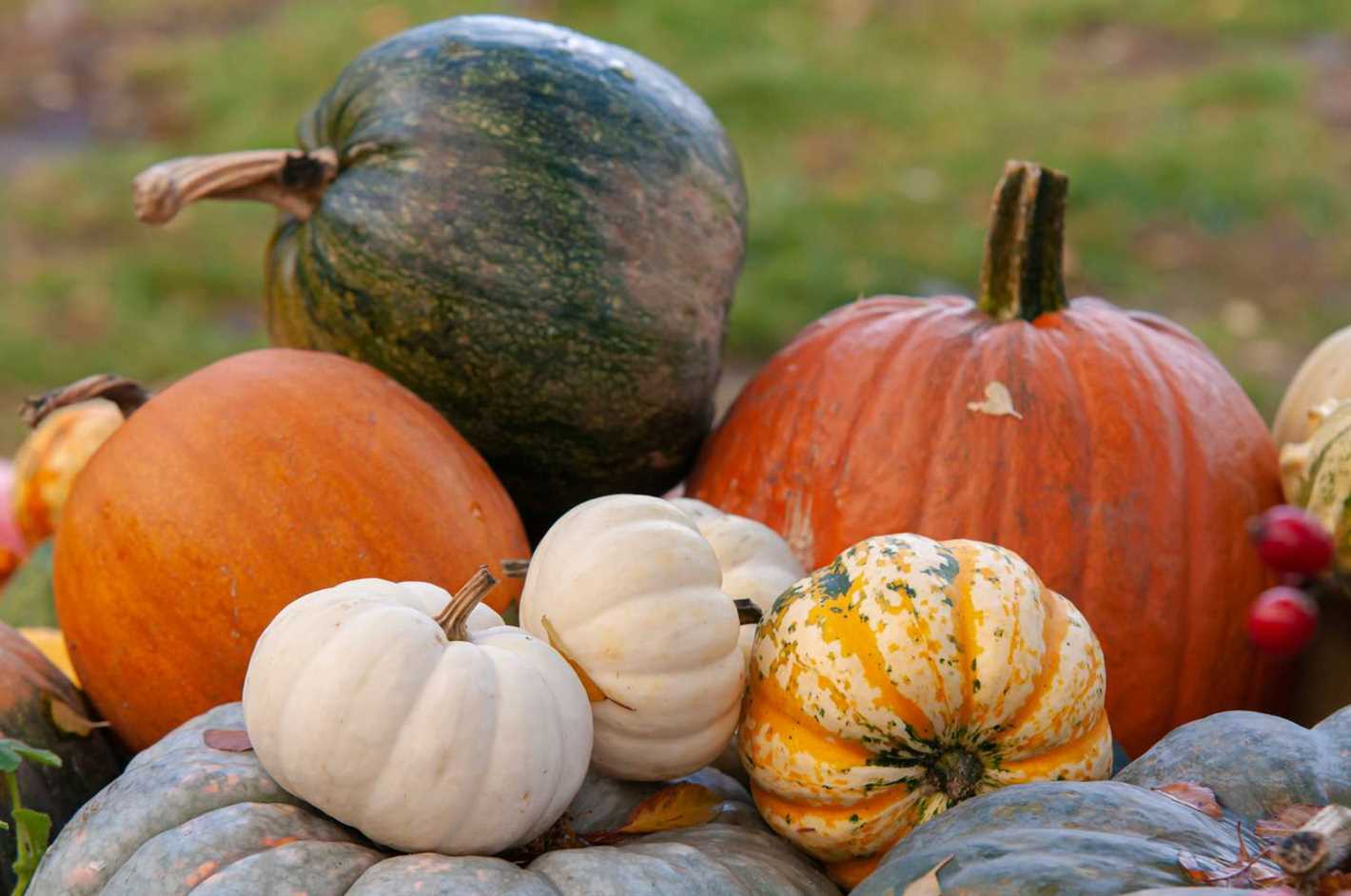
Take into account the available space in your vegetable garden. Some pumpkin varieties are compact and suitable for small gardens or containers, while others require more room to spread out.
Growing Season
Consider the length of your growing season. Some pumpkin varieties take longer to mature than others. If you have a short growing season, look for varieties that have a shorter maturity period.
Climate
Pay attention to the climate conditions in your area. Some pumpkin varieties are better suited for warmer climates, while others can withstand colder temperatures. Choose a variety that is well adapted to your specific climate.
Intended Use
Think about how you plan to use the pumpkins. Are you looking for varieties that are good for carving, or do you want pumpkins that are ideal for cooking and baking? Different varieties have different qualities, so consider your intended use before making a choice.
Taste and Texture
Consider your preference in terms of taste and texture. Some pumpkin varieties have a sweeter flavor and smoother texture, while others have a more pronounced flavor and denser texture. Read the descriptions of different varieties to find one that suits your taste buds.
Resistance to Diseases
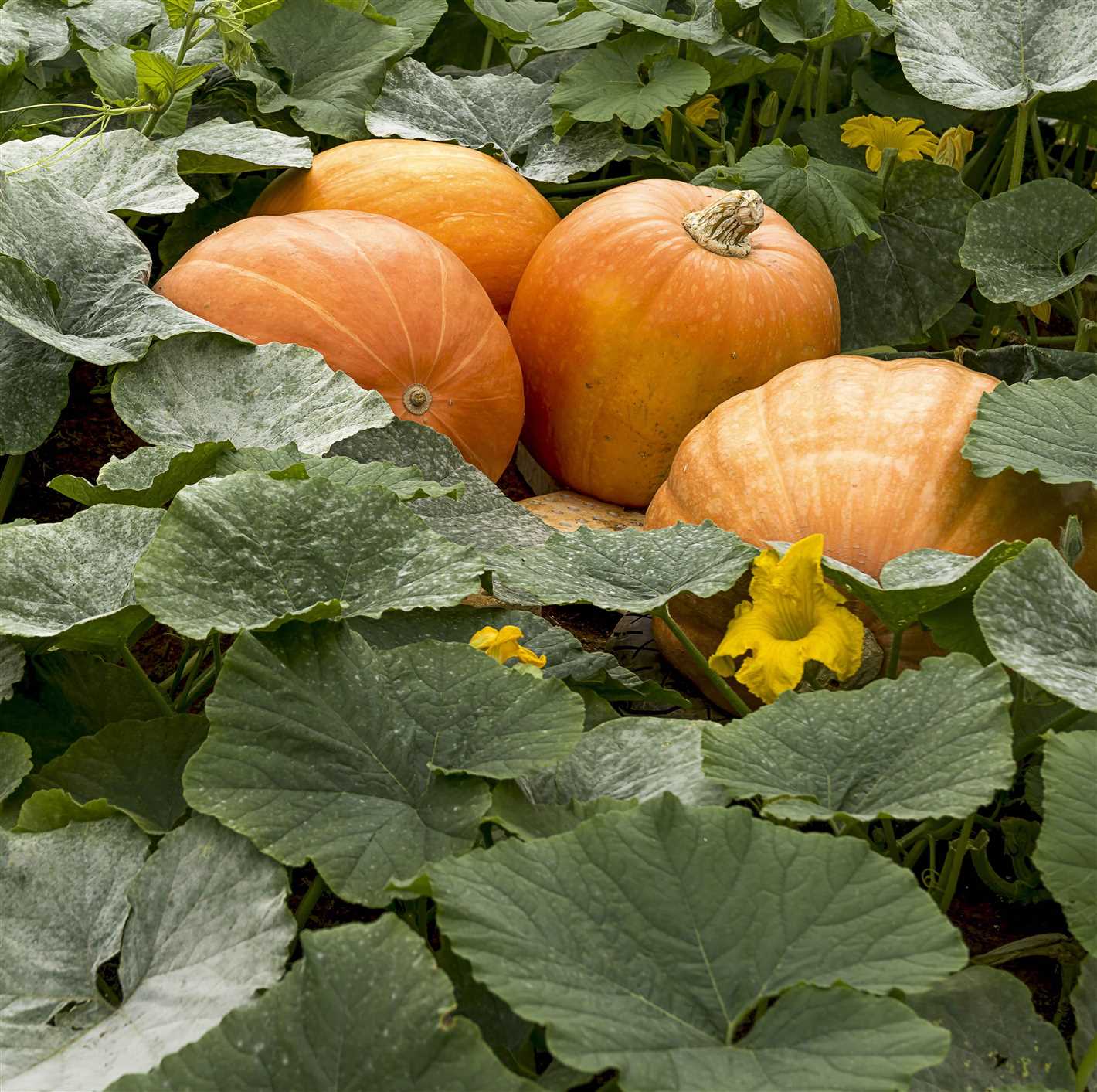
Check if the variety you are considering is resistant to common pumpkin diseases, such as powdery mildew or bacterial wilt. Resistant varieties are more likely to thrive and produce a healthy crop.
Availability
Lastly, consider the availability of the pumpkin variety. Some varieties may be easier to find in your local nurseries or seed catalogs. It’s recommended to choose varieties that are readily available to ensure you can get the seeds or seedlings when you need them.
By assessing these factors and considering your specific requirements and preferences, you can choose the right pumpkin variety that will thrive in your vegetable garden and meet your needs.
The Best Pumpkin Varieties for Home Gardens
Cinderella
The Cinderella pumpkin variety, also known as Rouge Vif d’Etampes, is a classic choice for home gardens. It has a unique shape, resembling the fairytale pumpkin, with a bright orange color and deep ribbing. This variety is not only great for Halloween decorations, but it is also delicious for baking and cooking.
Jack O’Lantern
Jack O’Lantern pumpkins are the most popular choice for carving during Halloween. These pumpkins have a deep orange color and smooth skin, making them easy to carve intricate designs. They also have a sweet flavor, making them suitable for pies and other culinary uses.
Sugar Pie
Sugar Pie pumpkins are small and dense, perfect for making pies. They have a sweet, smooth flesh that bakes well and is often used in traditional Thanksgiving recipes. These pumpkins are also great for roasting and making soups.
Atlantic Giant
The Atlantic Giant pumpkin variety is famous for its massive size. These pumpkins can grow to be over 1,000 pounds, making them a fun challenge for home gardeners. While they may not be the best for culinary uses due to their size, they are perfect for competitions and creating impressive displays.
Delicata
Delicata pumpkins are known for their unique shape and flavorful flesh. They are smaller in size and have a cream-colored skin with green stripes. Their flesh is sweet and tender, making them a great choice for roasting or stuffing.
These are just a few of the best pumpkin varieties for home gardens. Whether you’re looking for the perfect pumpkin for carving, baking, or creating a stunning display, there’s a variety out there to suit your needs.
Jack O’Lantern
The Jack O’Lantern pumpkin variety is one of the most popular choices for Halloween decorations. Its bright orange color and classic round shape make it perfect for carving spooky faces and creating traditional Jack O’Lanterns.
Main Characteristics
- Shape: Round
- Color: Bright orange
- Size: Medium to large
- Weight: Typically between 10 and 20 pounds
- Texture: Smooth skin
Cultivation Tips
- Choose a sunny spot in your vegetable garden for planting.
- Prepare the soil by adding organic matter, such as compost.
- Sow the seeds directly into the ground after the last frost date.
- Plant the seeds about 1 inch deep and 2 to 3 feet apart.
- Keep the soil moist but not waterlogged throughout the growing season.
- Monitor for pests and diseases and take necessary action.
- Harvest the pumpkins when the rinds are fully orange and firm.
- Leave a few inches of stem attached when cutting the pumpkins from the vine.
Uses
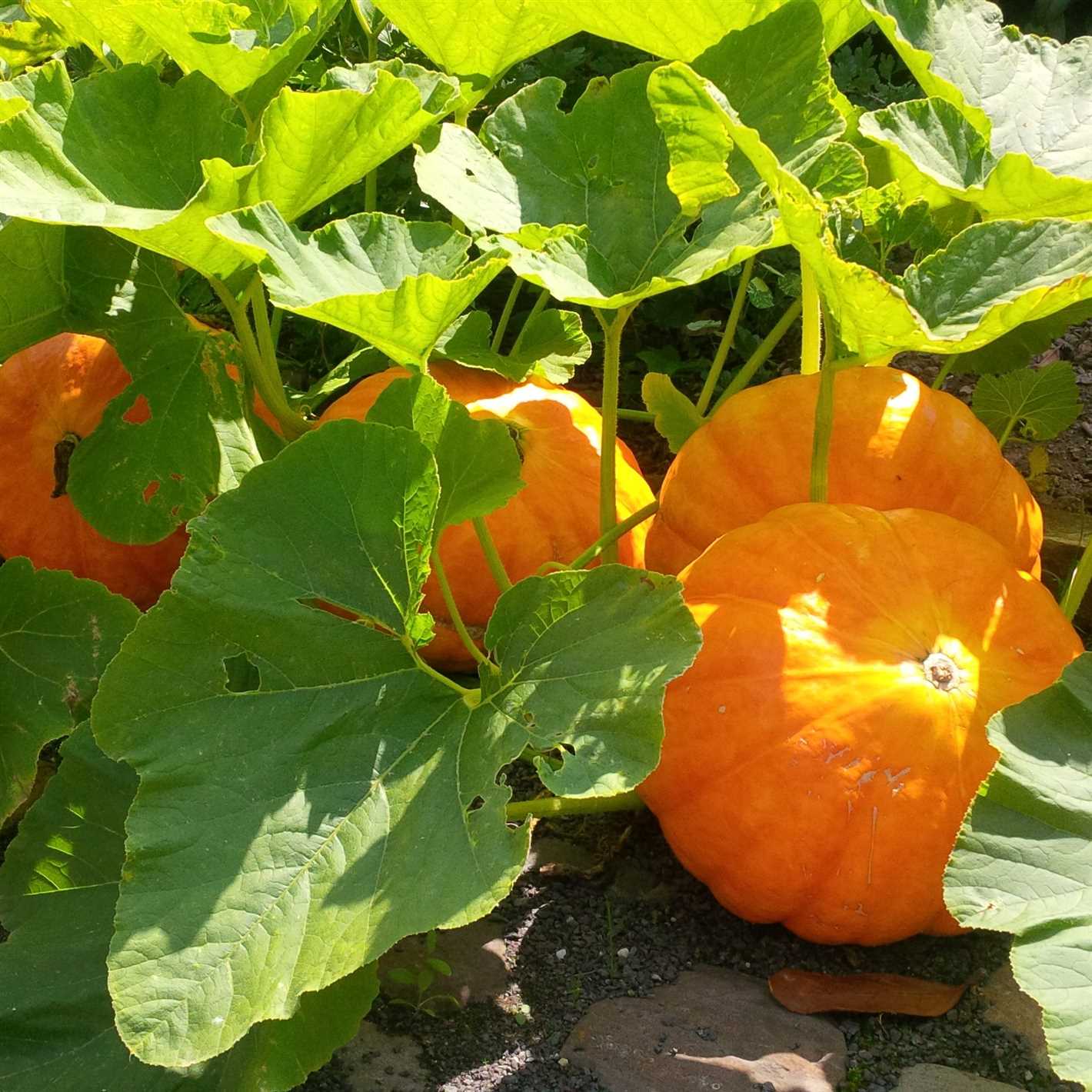
Besides being a favorite Halloween decoration, Jack O’Lantern pumpkins are also great for baking and cooking. They can be used to make delicious pumpkin pies, soups, breads, and other tasty treats. The flesh has a smooth texture and a sweet flavor, making it ideal for various culinary creations.
Storage
To prolong the storage life of Jack O’Lantern pumpkins, make sure to cure them first. Cure the pumpkins for 10 to 14 days in a warm and dry place, such as a sunny porch or a well-ventilated room. After curing, keep the pumpkins in a cool and dry location, such as a basement or pantry. Properly stored pumpkins can last for several months.
Fun Fact
The tradition of carving pumpkins for Halloween originated from the Irish folklore about Stingy Jack, a man who tricked the devil and was forbidden entrance into heaven or hell. He was doomed to wander the earth with his lantern made from a hollowed-out turnip, hence the name Jack O’Lantern.
Sugar Pie
The “Sugar Pie” pumpkin is a variety known for its sweet flavor and smooth texture, making it a popular choice for baking pies and other desserts. It is also referred to as the “New England Pie” pumpkin.
Characteristics
- The Sugar Pie pumpkin typically weighs around 4-8 pounds (1.8-3.6 kg).
- It has a round shape and a deep orange skin.
- The flesh is bright orange and has a fine-grained texture.
- The flavor is sweet and nutty.
- Sugar Pie pumpkins have a good shelf life and can be stored for several months.
Growing Sugar Pie Pumpkins
Here are some guidelines for growing Sugar Pie pumpkins:
- Location: Choose a sunny spot in your vegetable garden with well-drained soil.
- Sowing: Start the seeds indoors 2-3 weeks before the last frost date in your area. Transplant the seedlings outdoors when the soil has warmed up.
- Spacing: Space the plants 2-3 feet apart to allow for adequate air circulation.
- Watering: Keep the soil evenly moist throughout the growing season, but avoid overwatering.
- Fertilizer: Apply a balanced fertilizer at planting time and side-dress with compost or organic fertilizer halfway through the growing season.
- Pollination: Sugar Pie pumpkins are insect-pollinated, so it’s important to attract bees and other pollinators to the garden. Avoid using pesticides that can harm beneficial insects.
- Harvesting: Sugar Pie pumpkins are ready to harvest when the skin has fully turned orange and is hard. Cut the pumpkins from the vines, leaving a few inches of stem attached. Cure the pumpkins in a warm, dry area for 10-14 days before storing.
Uses
Sugar Pie pumpkins are primarily used for making pies, but they can also be used in other delicious recipes such as soups, breads, and custards. The sweet flavor and smooth texture of the flesh make it a versatile ingredient in both sweet and savory dishes.
Conclusion
The Sugar Pie pumpkin is a fantastic variety for those looking to grow pumpkins for baking and cooking purposes. With its sweet flavor, smooth texture, and long shelf life, it is a favorite among home gardeners and chefs alike. So why not give it a try in your vegetable garden and enjoy the delicious treats you can make with it!
Cinderella
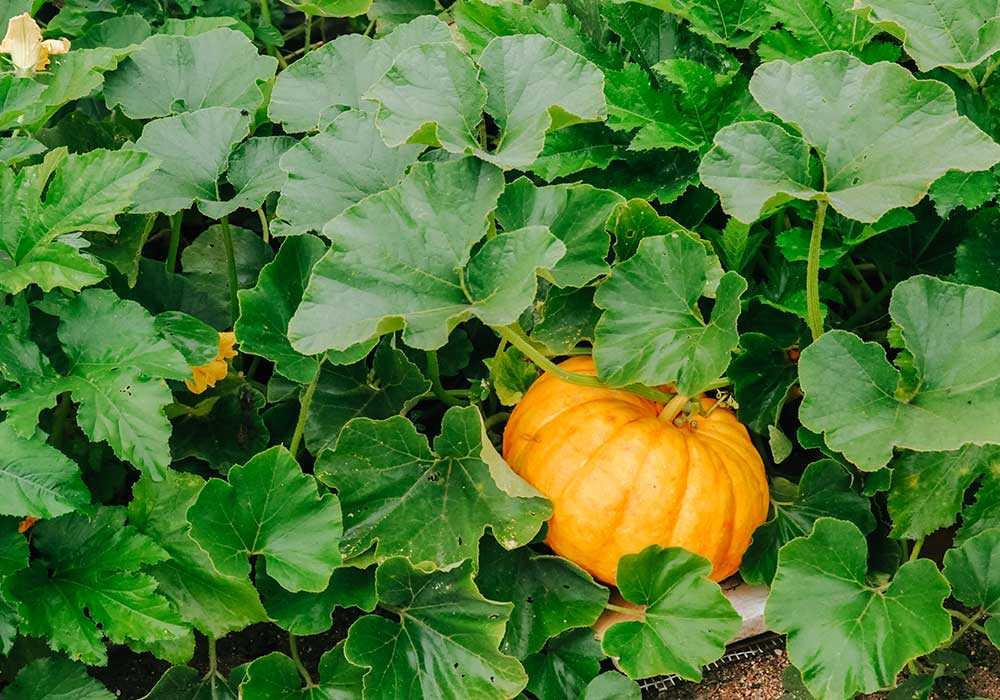
Cinderella pumpkins, also known as Rouge vif d’Etampes or Rouge vif d’Étampes, are a unique and eye-catching variety of pumpkin. They are named after the fairytale character Cinderella because of their distinctive flattened shape and vibrant orange-red color, reminiscent of the pumpkin carriage in the story.
Growing Conditions: Cinderella pumpkins thrive in warm climates with a long growing season. They require full sun and well-draining soil. It is important to provide them with plenty of space to spread out as they tend to produce large vines.
Planting: Start seeds indoors 2-4 weeks before the last frost date in your area. Transplant them outdoors after all danger of frost has passed and the soil temperature has reached at least 60°F (15.5°C). Plant the seeds or seedlings in hills or rows with a spacing of 4-6 feet apart.
Care: It is crucial to water the plants regularly, especially during dry periods. Mulching around the plants can help retain moisture in the soil. Regularly monitor for pests, such as aphids or squash bugs, and take appropriate measures to control them. Cinderella pumpkins may also require occasional pruning to keep the vines in check.
Harvesting: Cinderella pumpkins are usually ready for harvest in 100-110 days. The skin should be a deep orange-red color and hard to the touch. Cut the pumpkins from the vines rather than pulling them to avoid damaging the plant. After harvesting, cure the pumpkins in a warm, dry area for about two weeks to improve their storage life.
Uses: Cinderella pumpkins are not only a beautiful addition to your garden but also have a delicious flavor. They have a sweet and slightly nutty taste, making them perfect for baking, roasting or making soups and pies. Their unique shape and color also make them a popular choice for fall decorations, centerpieces, and even Cinderella-themed gardens.
| Attribute | Details |
|---|---|
| Skin Color | Orange-red |
| Fruit Shape | Flattened, ribbed |
| Fruit Size | 8-15 pounds |
| Days to Maturity | 100-110 days |
| Taste | Sweet, nutty |
| Common Uses | Baking, roasting, soups, pies, decorations |
Atlantic Giant
Atlantic Giant is a popular variety of pumpkin known for its enormous size. It is often grown for competitions and can reach weights of over 1,000 pounds. This variety has a bright orange color and a ribbed surface, making it visually appealing.
Growing Conditions
Atlantic Giant pumpkins require a lot of space to grow, as their vines can spread up to 25 feet. They also need full sun to thrive, so choose a location in your vegetable garden that receives at least 6-8 hours of direct sunlight per day. The soil should be well-draining and rich in organic matter.
Seeds can be started indoors 2-4 weeks before the last frost date or directly sown in the garden after all danger of frost has passed. Plant the seeds about 1 inch deep and keep the soil consistently moist until germination occurs. Once the seedlings have established, thin them to the strongest plant per hill.
Care and Maintenance
As the plants grow, provide them with ample water, especially during dry spells. Make sure to water the plants deeply rather than shallowly to encourage deep root growth. Mulching around the base of the plants can help conserve moisture and suppress weed growth.
Fertilize the plants regularly with a balanced, all-purpose fertilizer according to the package instructions. This will provide the necessary nutrients for healthy growth and development.
Harvesting and Storage
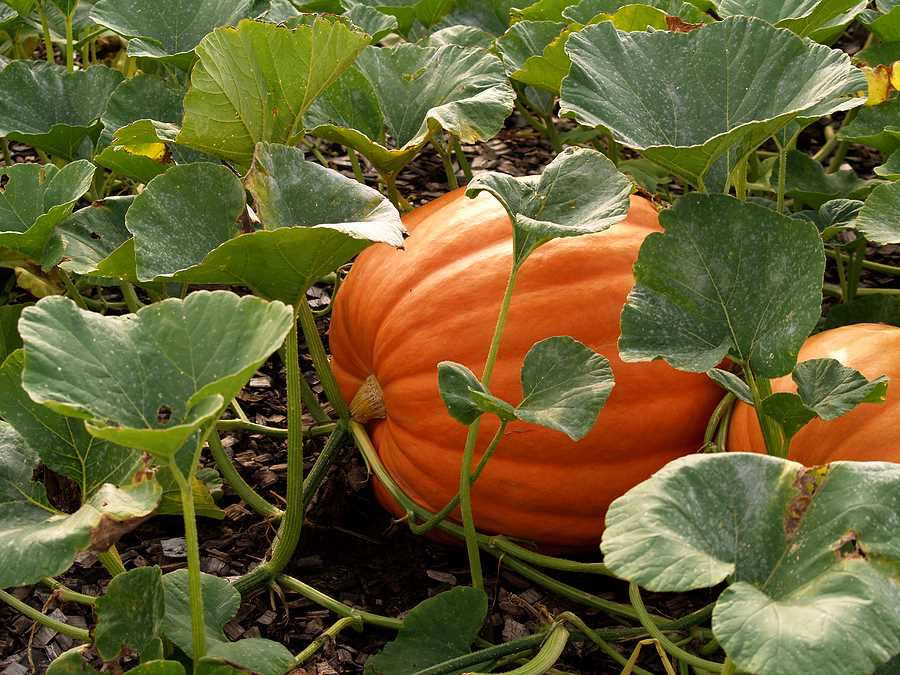
Atlantic Giant pumpkins take about 100-120 days to mature. They are ready to harvest when the skin becomes firm and the vines begin to die back. Use a sharp knife to cut the pumpkins from the vine, leaving about 3-4 inches of stem attached.
After harvest, it is important to cure the pumpkins to prolong their shelf life. Place them in a warm, dry area for about 10 days to allow the skin to harden. Once cured, store the pumpkins in a cool, dry place with good ventilation. They can last for several months if stored properly.
Uses
Atlantic Giant pumpkins are often used for decorative purposes due to their large size and striking appearance. They can also be used for making pies, soups, and other culinary creations. The flesh is typically sweet and ideal for baking.
Potential Problems
While Atlantic Giant pumpkins are generally easy to grow, they can be susceptible to certain pests and diseases. Common issues include powdery mildew, vine borers, and squash bugs. Monitor your plants regularly and take appropriate measures to control any problems that arise.
Overall, growing Atlantic Giant pumpkins can be a rewarding experience. With the right conditions and care, you can enjoy the thrill of seeing these giant pumpkins develop in your vegetable garden.
Baby Boo
- Plant Description:
- Flavor Profile:
- How to Grow:
- Select a sunny spot in your veggie garden for planting.
- Prepare the soil by removing any weeds and adding compost or organic matter.
- Sow the seeds directly into the soil after the danger of frost has passed, about 1 inch deep and 3 feet apart.
- Keep the soil consistently moist, but not waterlogged.
- Protect the plants from pests and diseases by using natural or organic methods, such as companion planting and regular inspections.
- Harvest the pumpkins when they have reached their mature size and the skin has hardened.
- Best Uses:
- Storage:
The Baby Boo pumpkin is a small, white-skinned variety that is characterized by its unique shape and size. It typically grows to be about 2 to 3 inches in diameter and weighs around 6 to 8 ounces. The skin of the pumpkin is smooth and shiny, giving it a visually appealing appearance.
The flesh of the Baby Boo pumpkin is not recommended for culinary use, as it lacks the sweetness and texture of other pumpkin varieties. However, it is commonly used for decorative purposes due to its small size and unique color.
To grow Baby Boo pumpkins, it is important to provide them with proper care and growing conditions:
The Baby Boo pumpkin is primarily used for decorative purposes due to its unique size and color. It can be used as a table centerpiece, in seasonal displays, or as a cute addition to your fall decorations.
As Baby Boo pumpkins are not typically used for culinary purposes, there is no need for long-term storage. However, if you would like to preserve their decorative appearance, you can keep them in a cool, dry place for several weeks.
“Question-Answer”
What are the best varieties of pumpkins to grow in a vegetable garden?
There are several popular varieties of pumpkins that are well-suited for growing in vegetable gardens. One of the best is the “Sugar Pie” pumpkin, which is small in size and known for its sweet flesh. Another great variety is the “Cinderella” pumpkin, which has a unique flattened shape and a rich, sweet flavor. Some other popular choices include the “Jack Be Little” pumpkin, which is miniature in size, and the “Howden” pumpkin, which is larger and great for carving.
Are there any specific pumpkin varieties that are better for baking?
Yes, certain pumpkin varieties are ideal for baking. The “Sugar Pie” pumpkin is a top choice for baking, as it has tender, sweet flesh that is perfect for making pumpkin pies, breads, and other baked goods. Another great option is the “Long Island Cheese” pumpkin, which has a dense, sweet flesh that is great for baking. These varieties have a rich flavor and smooth texture that makes them perfect for all your baking needs.
Can you recommend any disease-resistant pumpkin varieties?
Yes, there are several disease-resistant pumpkin varieties available. One recommended option is the “Hercules” pumpkin, which is resistant to powdery mildew, a common fungal disease. Another disease-resistant variety is the “Munchkin” pumpkin, which is resistant to both powdery mildew and mosaic virus. The “Blue Moon” pumpkin is also known for its disease resistance, particularly against powdery mildew. These varieties are a great choice if you want to minimize the risk of disease in your pumpkin plants.
What is the best time to plant pumpkin seeds?
The best time to plant pumpkin seeds is in the late spring or early summer, once the soil has warmed up and all danger of frost has passed. Generally, you can start planting pumpkin seeds around mid-May to early June, depending on your location. It’s important to make sure that the soil temperature is at least 60°F (15°C) for optimal germination and growth. Planting at the right time will ensure that your pumpkin plants have enough time to mature and produce a bountiful harvest.
How much space do pumpkin plants need in the vegetable garden?
Pumpkin plants require a significant amount of space to grow and spread out. It’s recommended to give each pumpkin plant a minimum of 50 to 100 square feet of space in the vegetable garden. This allows the vines to sprawl out and the pumpkins to grow properly without overcrowding. If you have limited space, you can also try growing pumpkins vertically using trellises or other supports. Just make sure to provide enough space for the vines to climb and support the weight of the developing pumpkins.
How long does it take for pumpkins to reach maturity?
The time it takes for pumpkins to reach maturity can vary depending on the variety and growing conditions. On average, most pumpkin varieties take between 80 to 120 days to reach full maturity. However, some smaller varieties, like the “Jack Be Little” pumpkin, may mature in as little as 90 days. Larger varieties, such as the “Howden” pumpkin, may take closer to 110 to 120 days. It’s important to check the specific maturity requirements for the variety you are growing to determine the ideal harvest time.







